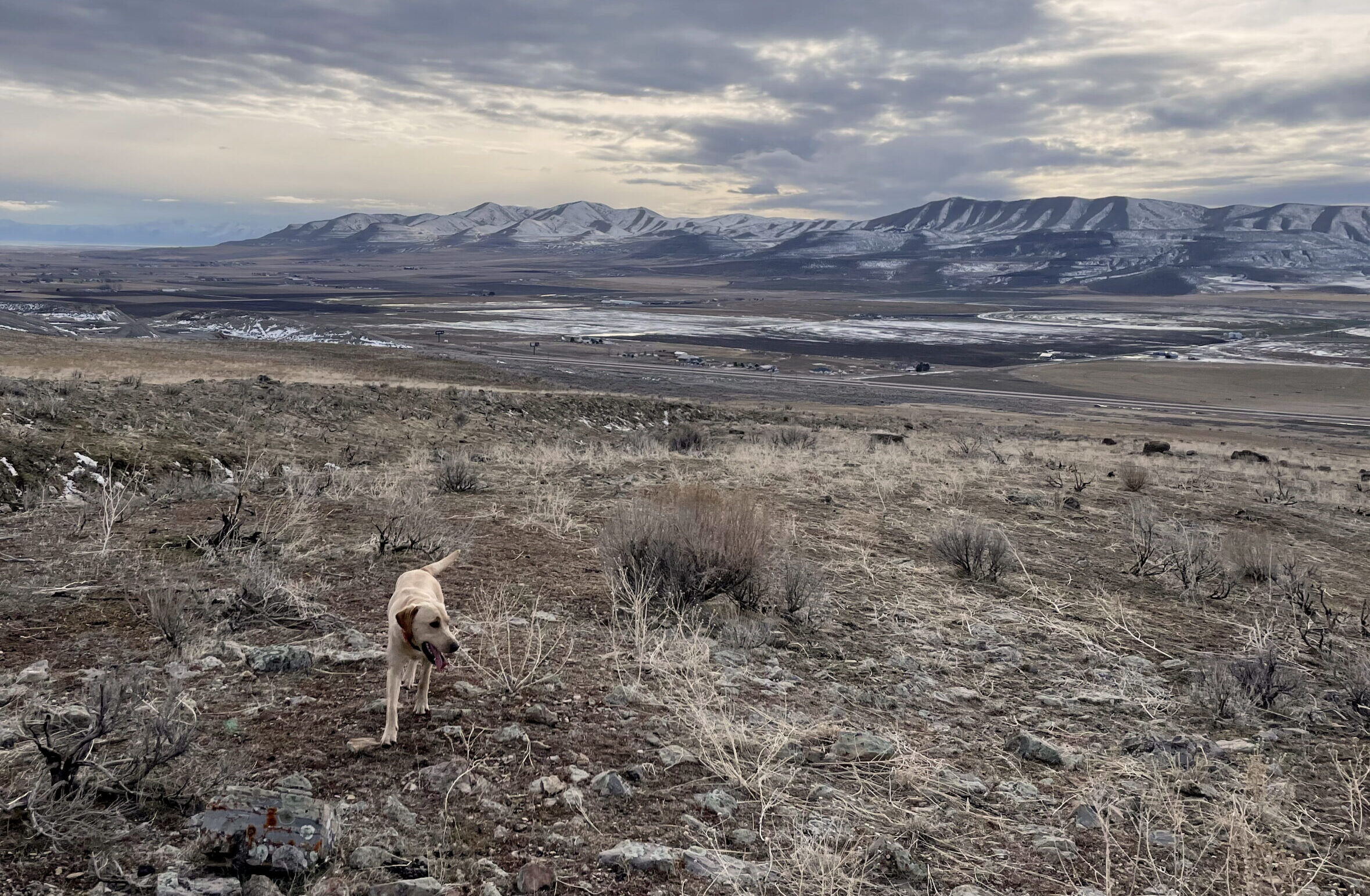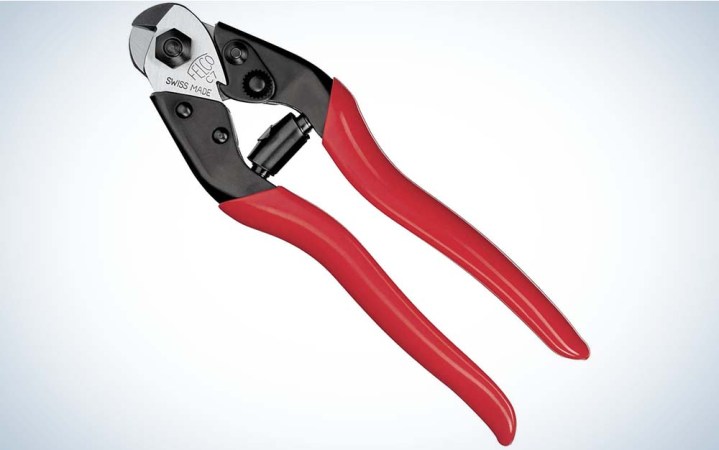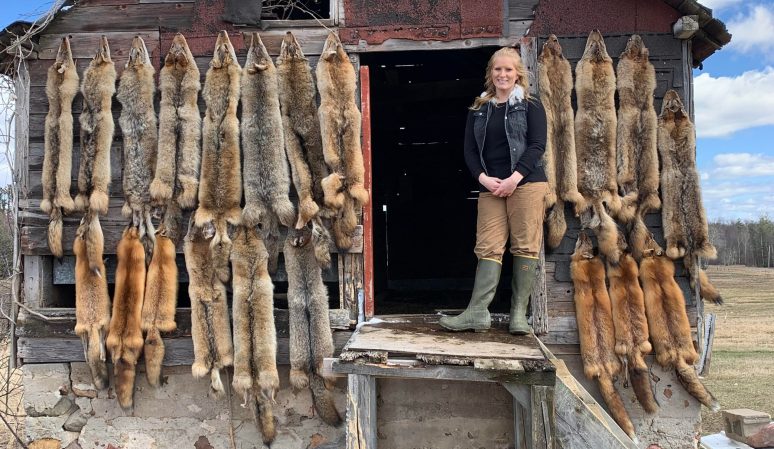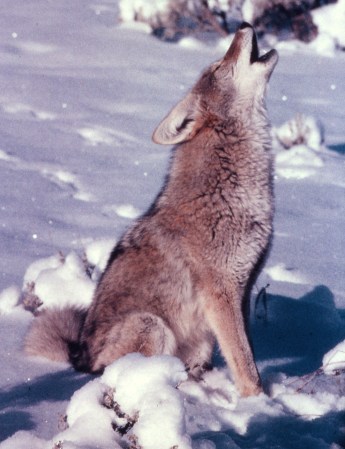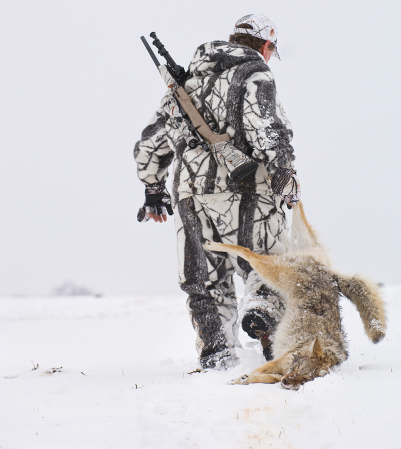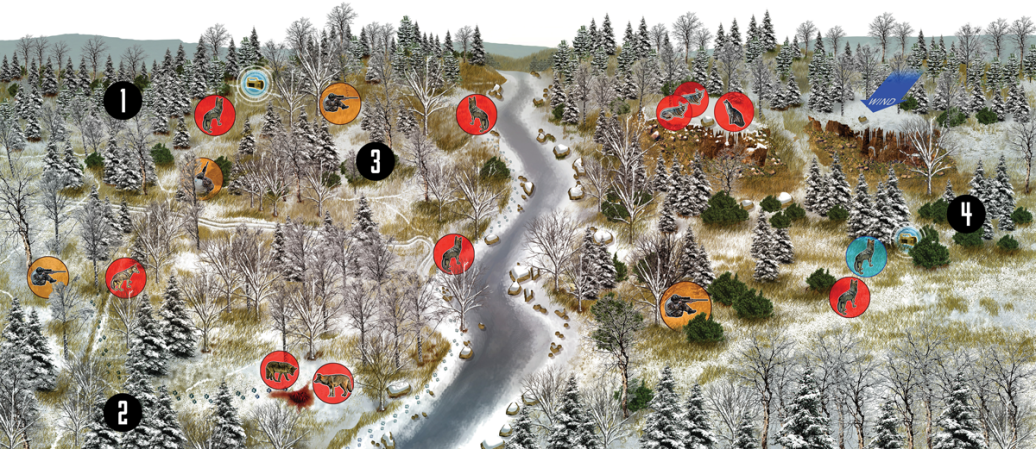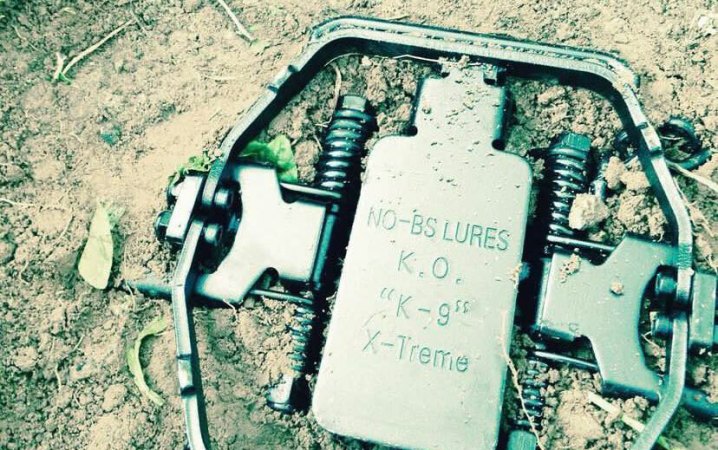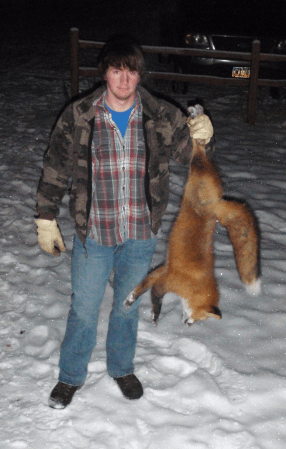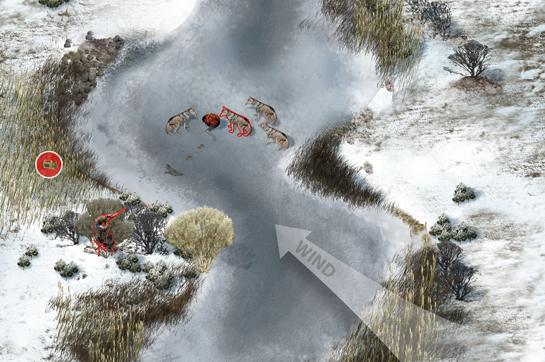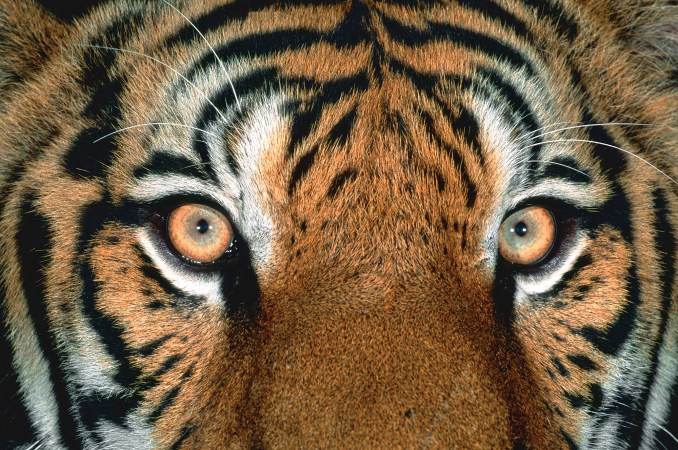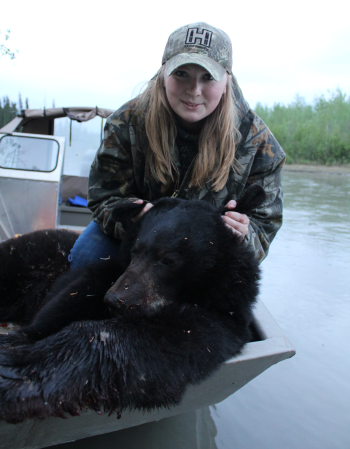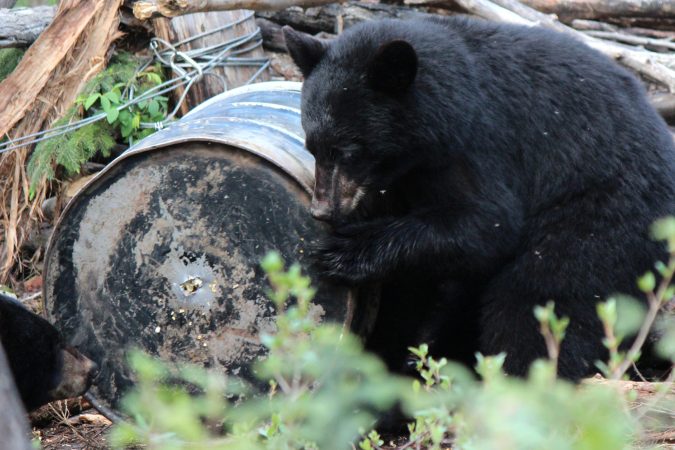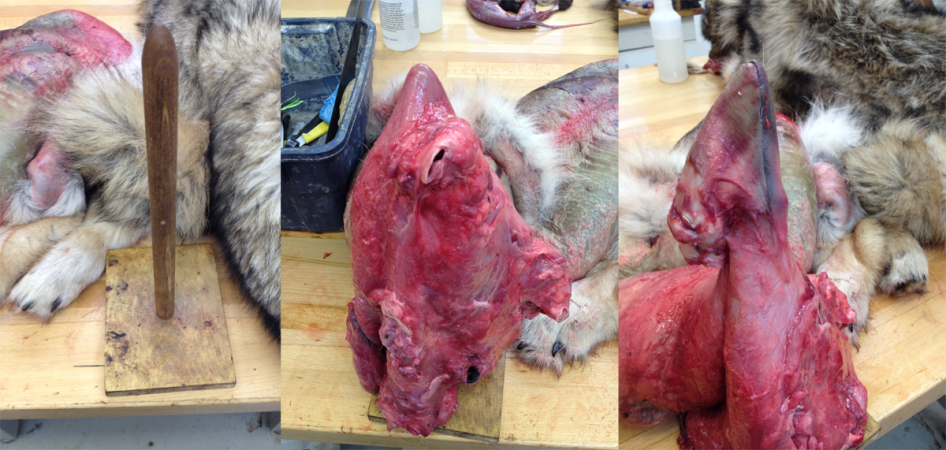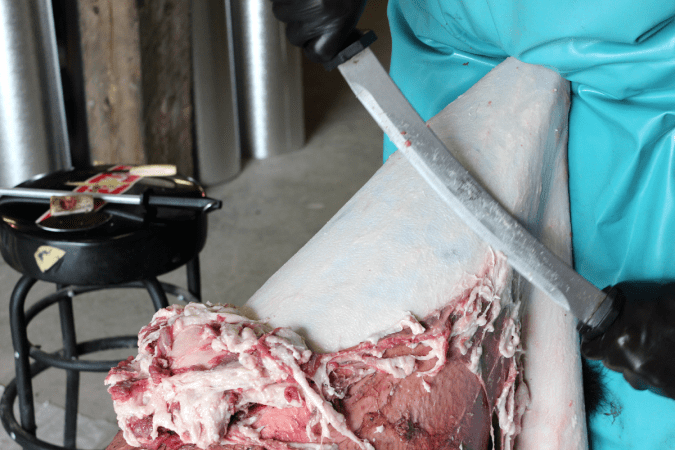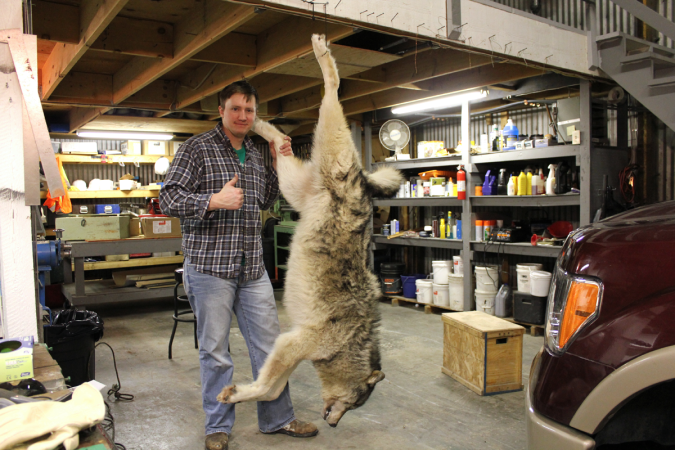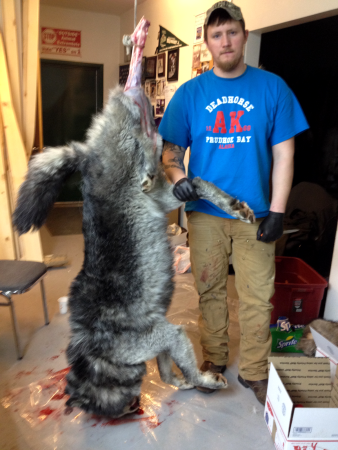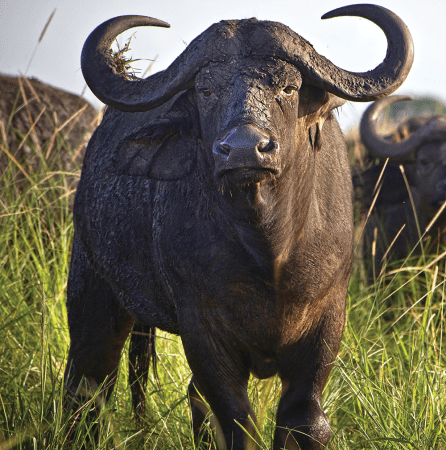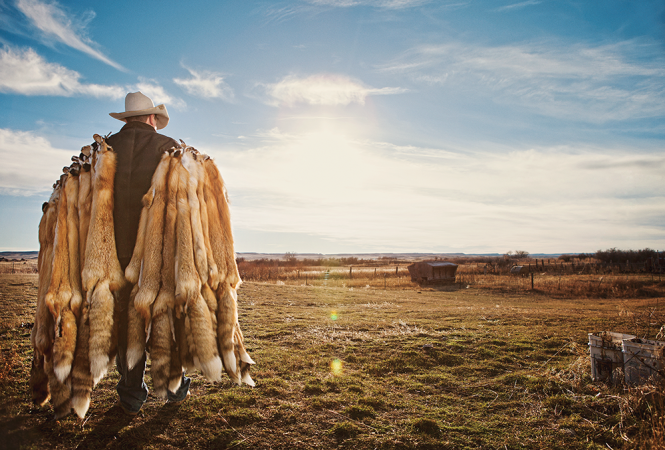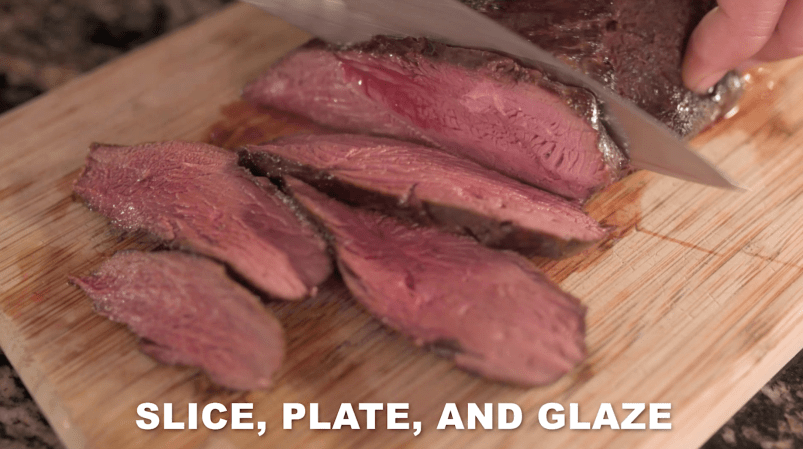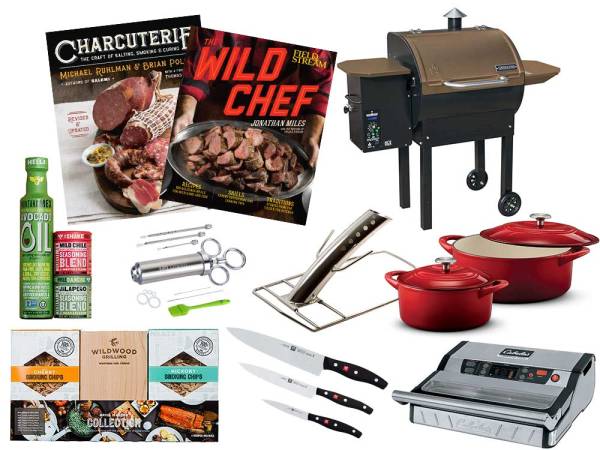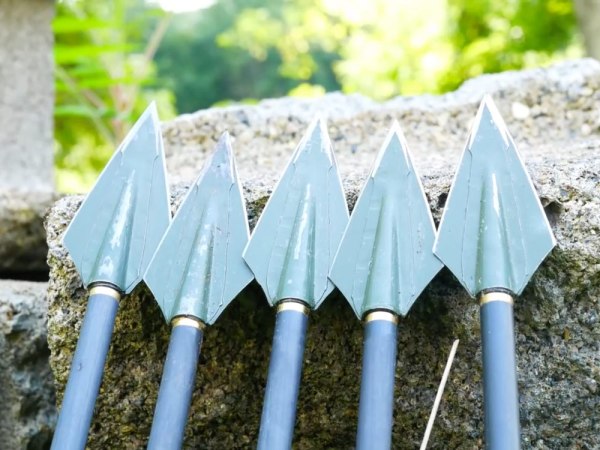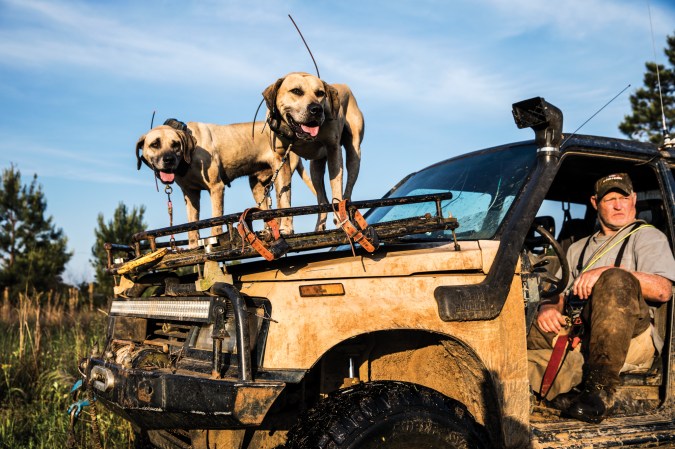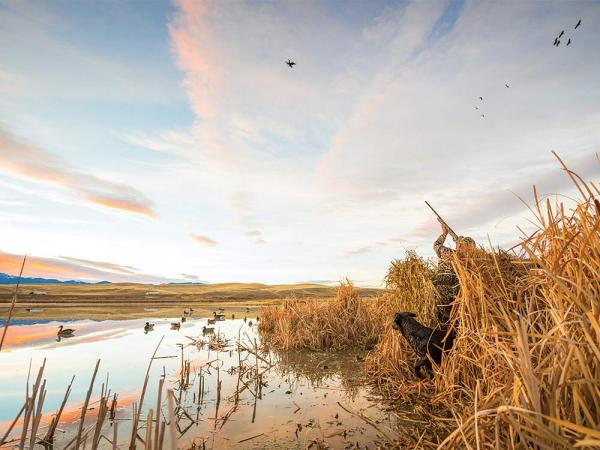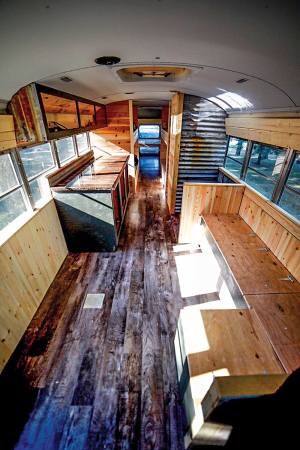If you’re a Western upland bird hunter, your most important piece of gear isn’t a light shotgun or a property-identifying mapping app. It’s a pair of serious wire-snipping pliers, which are like most defensive weapons: you simultaneously take steps to never deploy them while also hoping you have adequate time to put them to work, in this instance to free your dog from a strangulating coyote cable.
The presence of a new breed of lethal coyote snares on public land in most Western states requires upland hunters—and mountain lion and bear hunters and rabbit-chasing houndsmen, for that matter—to prepare the same way you might when you expect to encounter other environmental hazards, including porcupines, venomous snakes, or bone-dry landscapes.
That’s one takeaway from a review of coyote-trapping regulations across the West. The other: You should know that you won’t have much time if your dog is caught in one of these new devices, called “Alberta power snares.” They’re designed to do what trappers have been admonished to do for decades now: kill their prey quickly and humanely. Only, at least occasionally these days, that accidental prey is a hunter’s dog.
It should be noted that trappers do not intend to catch domestic dogs. As a matter of practice, preference, and the law, they generally try to avoid incidental capture of all kinds, including deer, pronghorn antelope, cattle, and dogs run by hunters. In his 40 years of trapping and snaring across northeastern Montana, Kendal Miller has relocated snare sites away from areas frequented by humans and their pets, but nonetheless he’s caught a handful of domestic dogs.
“I have a neighbor who likes to hunt pheasants on one of my favorite coyote snaring spots,” says Miller, who asked me not to use his real name because retribution against trappers can get ugly online and in real life. “He’s learned to carry pliers and to disable the snares and let his dog go when it gets caught. He just makes it work. No big deal.”
But not every situation ends as winningly. Last winter, a pair of upland hunters’ dogs were caught in a gauntlet of Miller’s snares, set on public land. One of the dogs died. The incident revealed a disquieting reality: Around the West, gun dogs and coyote snares sometimes come in contact on the same landscapes and during the same seasons. Because both tradition and the law are on the side of coyote trappers—snares are as much a part of the Western landscape as barbed wire and dust devils—it’s up to hunters to protect their dogs.
How often are domestic dogs snared? Probably not frequently, but one of the blind spots in the regulations around snaring is that reporting of incidental catches isn’t comprehensive or consistent across jurisdictions. In Montana, trappers are required to report incidental capture of non-wildlife species but often this does not happen. And for hunters who lose a dog to a trapper’s snare, the statistics are meaningless anyway.
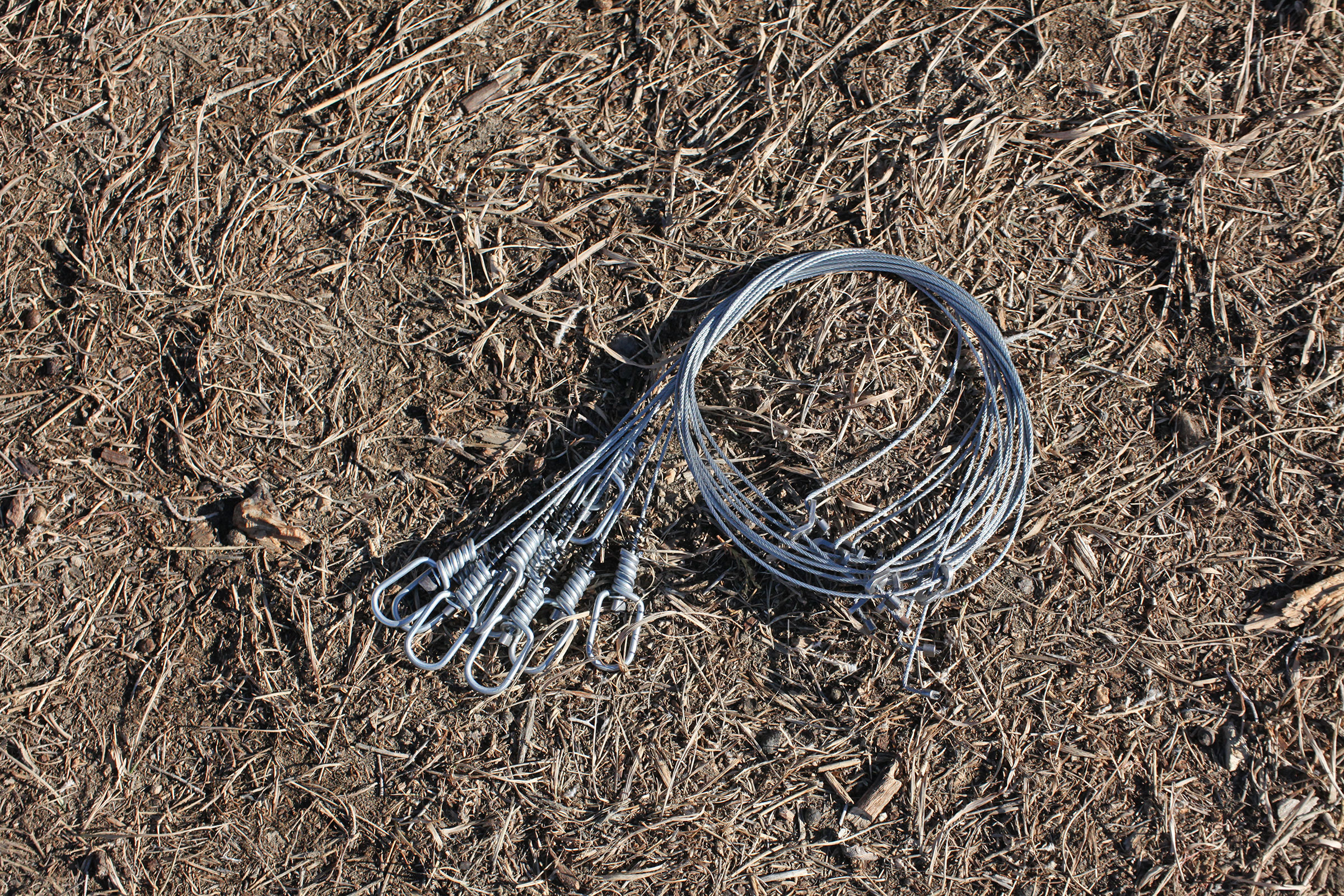
Killed by a Snare
Carolyn Mehl is one of the two upland hunters whose dogs encountered snares set by Miller (she knows they were his because, by law, trappers are required to attach their names and contact information to their traps and snares). The incident in December 2020 elevated the issue to the highest levels of public policy in Montana.
Last year, in the week between Christmas and New Year’s, Mehl and her husband Jon Haufler, were hunting a piece of state land enrolled in a sign-yourself-in Block Management hunting area north of my hometown of Glasgow, Montana. The couple, accompanied by their two 3-year-old dogs, were taking advantage of unusually balmy weather to finish Montana’s upland season.
I’ve hunted this piece of ground, and there’s not much cover. It’s mainly grazed-down state land, but along Porcupine Creek there’s a strip of snowberry shrubs and bunch willows. If you’re a bird hunter, that’s where you’d hunt, and it’s where Mehl and Haufler focused their efforts. They parked on a county road, crossed a fence, and turned their dogs’ noses into the wind.
Mehl hadn’t gone far from their vehicle when she saw Jake, her Weimaraner, stop on a dime and lurch into the air. He had been caught midstride by a wire anchored to the base of a stout willow.
“If I hadn’t been watching him, I wouldn’t have noticed. It was that fast,” says Mehl, who immediately recognized the restraint as a cable snare. She had watched videos that detail how to disable these devices, and immediately went to work. She deployed the Leatherman pliers she always carries in her bird vest and tried to cut the cable. Only the aircraft-grade cable wouldn’t cut or even dent no matter how hard she squeezed the handles.
Mehl called to Haufler, and the two of them worked for minutes, with three pairs of pliers, before they were able to disable the locking mechanism on the snare. Jake was agitated but otherwise fine. But where was Riley, their Pudelpointer?
“He was trained to come on a beep, and Jon beeped him repeatedly as we were working on Jake,” recalls Mehl. “We figured he was on point, so Jon went to look for him.”
When Mehl found them, only about 40 yards from where they liberated Jake, Haufler was cradling his dog. Riley was dead, garroted by two snares.
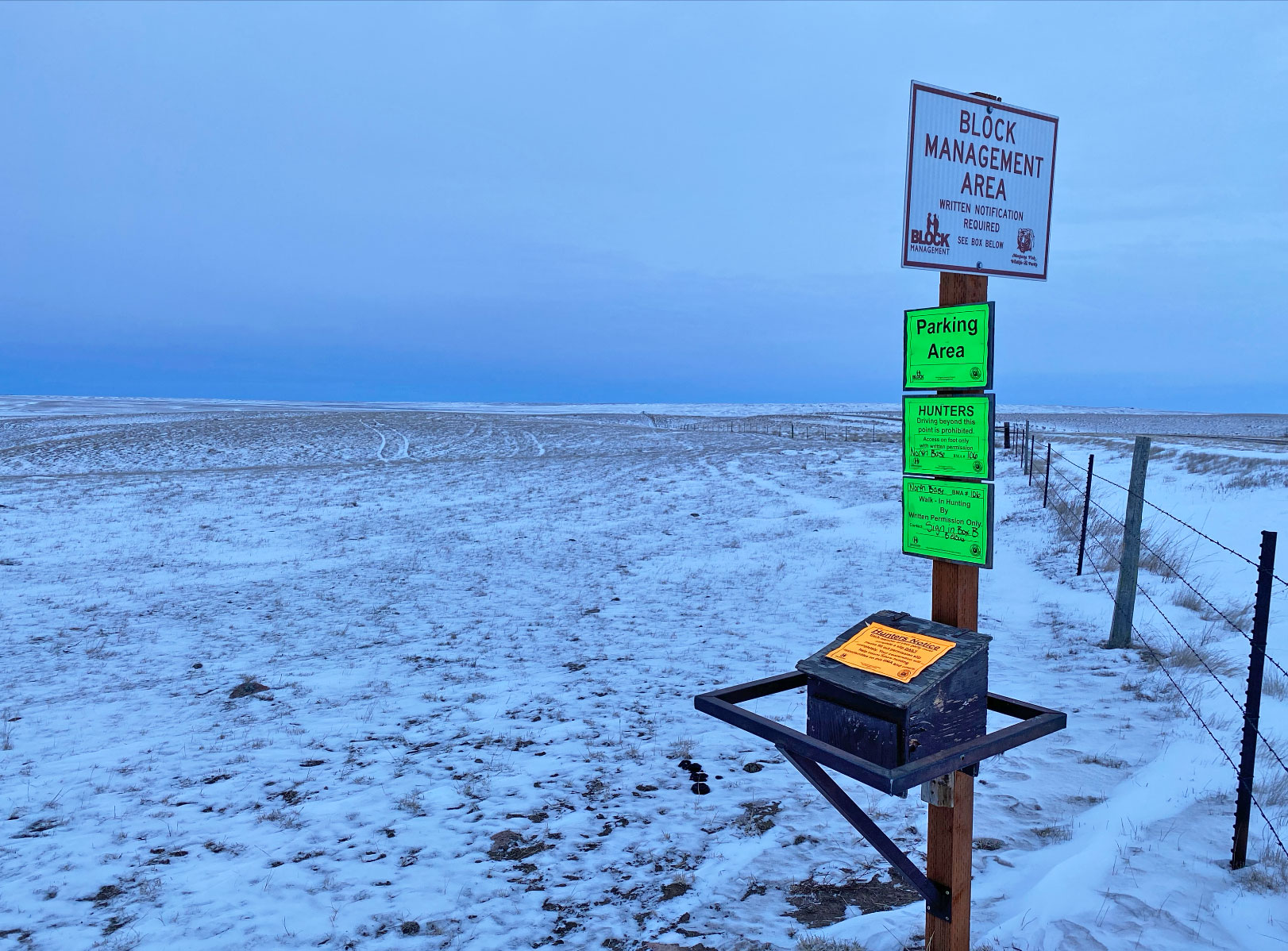
“We carried him out of the field, just in shock,” says Mehl, still shaky recounting the incident a full year later. “We brought him home and buried him. I just can’t get out of my mind that Riley was waiting for us to free him, but we couldn’t get there in time.”
Mehl’s other takeaway: She wasn’t prepared to disable the type of spring-accelerated snares that her dogs encountered. These are a relatively new style of snare perfected by Alberta coyote trapper Marty Sennecker, who notes on his website that many coyotes and wolves caught by his type of snare are “rendered unconscious in less than one minute upon this device firing.”
Given the lethality of these “power snares,” Mehl told me that she’s surprised these devices would be in an area open to public hunting. The incident occurred in late December, while the upland season for sharptailed grouse—the target species for Mehl and Haufler—was still open.
“If we had known it was an active snaring area, we wouldn’t have hunted there,” says Mehl. “But there was no indication. No signing. No notice at the Block Management sign-in box. It’s an area that invites hunters, and we went in there blind.”
Regulating Coyote Snaring, or Not
It turns out, in conversations with administrators of Montana’s Department of Natural Resources and Conservation, which manages 5.2 million acres of state school-trust lands, that any state section where trappers operate concurrently with other recreational users must be signed with perimeter-fence warnings that trapping is taking place on the property.
Miller, who acknowledged that his snares caught Mehl and Haulfler’s dogs on that state section, says that he signed the fenceline when he set the snares, but that “the signs must have been removed by somebody or blew away in the wind.”
The administrator of the area DNRC office says that his office normally conditions coyote trapping permit requests so that they take effect starting Jan. 2, the day after the close of Montana’s upland bird season. When that’s not possible, as was somehow the case with the Porcupine Creek property, they mandate perimeter signing.
“We’re bird hunters, too, and we have a pretty good handle on those state sections that are popular with upland hunters,” says the administrator, who asked not to be identified since he didn’t have permission to speak on the record. “So we do what we can, at least on our properties, to keep trappers and upland hunters apart seasonally.”
But that’s often not enough. Miller says that while he abides by the conditions of the DNR permit, he’s operating under a higher authority: the leasee of the state section. In the case of the Porcupine Creek unit, that’s a large landowner who gives Miller annual permission to conduct “animal-damage control activities” on the land.
“You’re going to have a hard time getting this stopped,” says Miller, who notes that he was operating in accordance with the law. “The cattleman’s associations will get involved if they have to. They’re the ones that got snares legalized in the first place, as a predator control tool.”
He’s right. In six states across the West, including Montana, coyote trapping and snaring is not regulated by the state wildlife agency. Instead, the activity is managed by states’ departments of livestock, and in most of those states, coyotes are classified as predatory animals. That oversight is a legacy of the 1931 federal Animal Damage Control Act, which gives authority to the U.S. Department of Livestock to carry out “a wildlife services program with respect to injurious species.” That same mechanism falls to agricultural and livestock departments in states around the West, most of which don’t have limitations on how coyotes can be hunted or trapped and most of which have stockgrowers, not hunters, as primary constituents. Snares are not the most indiscriminate type of predator control; most Western states continue to allow M-44 “cyanide bombs” to poison coyotes on public land.
The USDA’s oversight of “injurious species,” which includes most predators of livestock, is enforced by the agency’s Wildlife Services branch which employs agents, often known locally as “government trappers,” to resolve wildlife conflicts. When it comes to coyotes, that usually means lethal removal. In 2020, the year in which Wildlife Services received $83.9 million in federal appropriations, agents removed 62,702 coyotes from America’s landscape. In comparison, in most years, civilian trappers and hunters take around 500,000 coyotes nationwide. This winter, Montana coyote pelts have been selling for anywhere from $30 to $60 apiece.
In Montana, coyotes are not regulated, confirmed Brian Wakeling, game management bureau chief for Fish, Wildlife & Parks.
“Like skunks and weasels, coyotes are beyond the scope of regulated species,” Wakeling says. “Because coyotes are not regulated, an individual may trap or shoot coyotes without any authorization from the Department.”
The extent of the game agency’s involvement with coyotes is responding to cases of non-target catches and administering a database of voluntarily reported cases of incidental take. The most recent report of non-target trapping and snaring, dating from 2018, indicates 349 incidental captures were reported over a 6-year period. Forty-five percent of the incidental captures (of species as varied as mountain lions, bears, raptors, and domestic pets) ended in the death of the captured animal. The report notes that 148 dogs were incidentally captured from 2012 to 2017, for an average of about 25 per year in the state.
“Dogs were released in 95 percent of incidents,” according to the report. “Incidentally captured dogs were running at large in 42 percent of the cases and were out of command (out of sight or more than 50 feet from road/trail) in another 16 percent of cases.” Seven of the 148 inadvertently captured dogs died as a result of the trapping or snaring activity.
The report notes that approximately 60 percent of dog captures occurred on public land. And it further details that “excluding deaths in beaver sets, coyote snares were responsible for 41 percent of all deaths from incidental capture where trap type was known.”
The report also states that snares were responsible for 50 percent of the incidental capture in coyote sets. Another 47 percent were footholds, and 3 percent were body-grip traps. The report concludes that there is no population-level threat to any species from trapping or snaring.
Of all those administrative details that govern coyote management, Mehl thinks the most problematic—but resolvable—is the allowance of snares on publicly accessible hunting land during Montana’s upland bird season. The couple took their fight to the 2021 Montana State Legislature, where they worked with Rep. Tom France (D-Missoula) to draft House Bill 523, which would have restricted public-land snares to a type of “relaxing” snare that could only be deployed between Jan. 1 and April 30 each year. The bill failed in committee, mainly from opposition from Montana trappers, who claimed in testimony that the bill’s conditions would impose undue hardship on their predator-control efforts.
Political Headwinds of Coyote Trapping
Practical enforcement of snaring restrictions aside, HB523 faced other resistance, not the least of which is widespread support of trapping as a threatened cultural institution in urbanizing Western states.
There is plenty of evidence to support the notion that trapping is under pressure. Consider how trapping and predator hunting has been targeted by legislatures and ballot initiatives over the last few years.
A citizen’s initiative in 1996 ended hound hunting for mountain lions in Washington State. In Oregon, Initiative Petition 13 may qualify for this fall’s general election ballot. The initiative, known as “The Abuse, Neglect and Assault Exemption Modification and Improvement Act” would ban hunting and trapping statewide. And earlier this month, sportsmen swatted away legislation in Colorado that would have banned hunting and trapping for bobcat, lynx, and mountain lions in the state. After a dog was killed by an illegally set trap on public land in New Mexico, legislation nicknamed Roxy’s Law (after the pet that was killed) banned all trapping on public ground in the state.
In Montana, a group called Footloose Montana advocates for “trap-free public lands” but is considered by critics to be against trapping in all its forms on any type of land. Meanwhile, hunting communities are often encouraged to support trapping as a first line of defense against attacks on other, more widely accepted, pursuits such as deer and bear hunting.
“It’s the low-hanging fruit,” Brian Lynn, vice president of marketing and communications for the Sportsmen’s Alliance, told Outdoor Life last year. “And trapping is always on the front lines of the anti-hunting campaign. It’s easy for people to attack trapping and regulate it out of existence.”
Indeed, in the course of researching this piece, I was told several times by hunting advocacy sources to drop the story. Some said that I was “tearing a page right out of the playbook of the HSUS,” referring to the Humane Society of the United States, which has effectively driven wedges between hunters and trappers in its pursuit to ban all trapping, fur ranching, predator removal, and trophy hunting.
Mehl told me that she is by no means anti-trapping. But she thinks the trapping community risks losing valuable advocates if bird-hunters’ dogs are routinely—or even occasionally—snared.
“This whole thing is a big black eye for trappers,” she says.
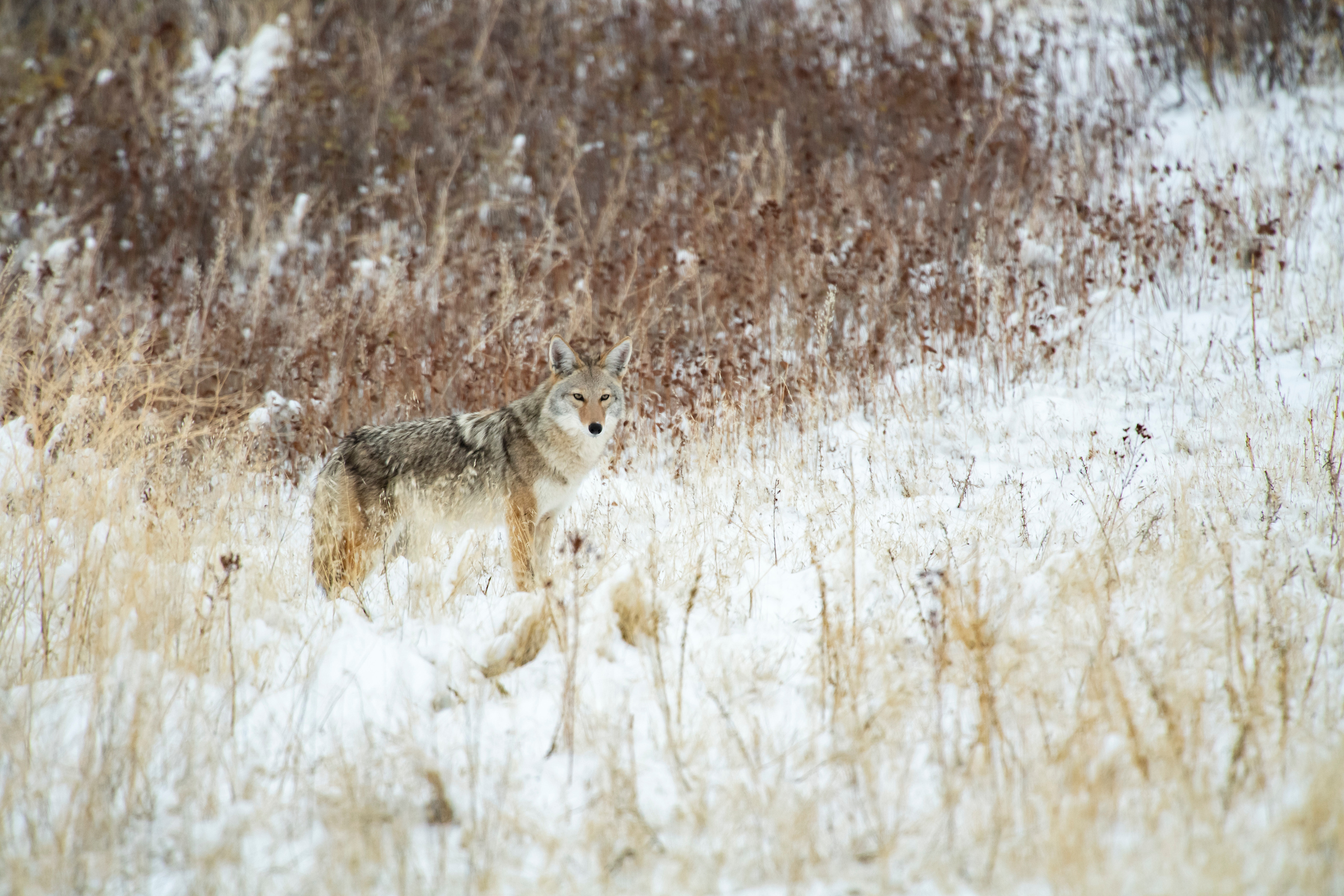
“What we know now, after our incident and subsequent research, is that coyotes are unprotected and trapping or hunting them is not regulated,” says Mehl. “That’s not consistent with the message that we hear from trappers: that trapping is a highly regulated activity. Largely it is, but not when it comes to coyotes.
“What was even more disappointing has been the way that we’ve been treated by agencies and the trapping community,” she says, referring to the responses she and Haufler got while asking questions about regulations and jurisdictions. “In Montana there are 140,000 upland bird hunters and less than 5,000 trappers, but we have been treated as though we’re criminals, or not team players, by questioning the need to reform the status quo. Then they told us this was our fault that our dog died because he should have been on a leash. That’s just not compatible with the way they hunt, or we hunt.”
Upland hunters may not be alone in their concerns over unintended capture by snares. This year both wolf snaring and the use of chase hounds for black bears were approved by the Montana legislature and codified by the Fish and Wildlife Commission.
On the other hand, a proposal to extend Montana’s upland bird season by a month, through Jan. 31, was rejected by the Fish and Wildlife Commission after extensive testimony from both bird hunters and trappers who worried about additional contact with traps and snares during a month that historically has been relatively conflict-free.
Dogs, Traps, and More Education
Eight months later and maybe 80 miles south of where Mehl and Haufler encountered snares, Todd Netto nearly lost his dog to what he describes as a “clinch-lock” snare.
“It was basically a metal zip tie,” says Netto, who lives in Glasgow. He brought his dog, a pit bull-Rottweiler cross, to accompany friends who were hunting mule deer on a chunk of BLM ground in remote northeastern Montana.
“She went into thick cover, and when she didn’t come to my beep, I found her sitting in the brush, just looking at me with that wire around her neck.”
Netto says videos that show how to disable snares (including ones that Mehl had watched) gave him a misplaced confidence that he could quickly free his dog.
“I thought snares had to have a tool-free release,” he says. “They don’t. I was only about 200 yards from my pickup, so sent my buddy to get my Gerber multi-tool. Luckily, my dog had a heavy plastic collar on. That saved her, but so did her calm nature. If she had pulled away in any way, she’d have been dead. If you have a dog that panics when cornered, they are 100 percent dead with a [power] snare. I couldn’t get my finger under it, but she had a plastic collar that kept it from cutting into her neck. I got lucky.”
Netto called a game warden to report the incident, and later filled out an incidental-take report. Since the November incident, he’s ordered three pairs of specialized cable-cutting pliers, one for his bird vest, one for his backpack, and the third for his pickup.
“I thought I was prepared, but I wish I had known more,” says Netto, who says he never identified the trapper who set the snare. “I’m not relying on my Gerber anymore. And the videos weren’t as helpful in the real world as I expected.”
Tony Bynum agrees. An outdoor writer and photographer based in Great Falls, Montana, Bynum was walking his 2-year-old border collie/heeler mix named Leo on the boundary of Giant Springs State Park this winter when Leo got caught in a foothold trap. It turned out the trapper didn’t have permission to trap the property, but Bynum’s takeaway is that if your dog isn’t used to being restrained, you may have to fight more than just the snare or trap.
“Leo bit my arms and just basically freaked out,” says Bynum. “I should have stuffed his head in the arms of my jacket while I worked on the trap, but it all happens so fast, you don’t have time to think about what-ifs.”
It’s important to note that most individual reports of dogs getting caught in snares or traps have their own unique details. But they have in common that the dogs weren’t leashed or in close control of their owners. That’s a significant factor for Jim Buell, president of the Montana Trappers Association.
“They need to keep their dogs in control,” says Buell. “In either sight or voice control, to avoid these unfortunate incidents. I feel terribly sorry for them, but as a remedy they want more regulations. We feel like what’s needed is more education.”
Tom Decker largely agrees. A well-regarded author of a compendium of best practices for trapping furbearers, Decker notes that coyotes have always occupied a very permissive place in wildlife regulation.
“If I’m a hunter in most Western states, I can hunt coyotes with rifles all year long, at night with thermal and night-vision equipment, or from an airplane,” says Decker. “There’s a tremendous variability in hunting regulations toward coyotes, let alone trapping regulations. That variability puts the onus on houndsmen, knowing where you are and who else might be out there. It’s a two-way street, though. A trapper needs to know who else is on the landscape and what else they might catch. A trapper doesn’t want to catch a dog, either.”
Brian Lynn with the Sportsmen’s Alliance echoes those sentiments. “We work to protect all hunters: trappers, houndsmen, rabbit, and bird dogs. Everyone. These situations are tricky, but as a community we have to work together to resolve them through education and communication,” he said. “We have enough people and organizations working against us, especially on public land, that we can’t afford to hurt each other.”
Back in Montana, there’s additional evidence of an appetite for education rather than legislation. Late in the 2021 Legislature, Senate Bill 60 was passed and later signed into law. It requires a trapper education course for residents that must include “trapping ethics, best practices, equipment, regulations, and avoidance of nontarget species.”
The FWP report from 2018 on incidental capture alludes to this educational effort.
“When dog owners keep their dogs in sight and verbal command and trappers trap legally, dogs are not killed and are rarely captured, usually to be released with a minor injury or uninjured,” according to the report. “The greatest degree of improvement toward reducing dog captures could be made with efforts to strictly enforce setback distances along with educating the public about keeping dogs in sight, command, and within setbacks. A mandatory trapper education program that focuses on avoiding dog captures would help.”
Mehl hopes the course, which is under development, will contain abundant information about predator snares in addition to the main curriculum detailing best practices for furbearer trapping. She’s not hopeful, though. In a Montana Trapper Education trapping clinic held in her hometown of Seeley Lake, Montana, instructors failed to mention anything about spring-loaded snares, or how to disable them.
So Mehl is engaging in her own brand of outreach, encouraging every upland hunter she meets to buy and carry cable-cutting pliers.
“That’s my take-away from this whole ordeal,” she says. “Any time you’re out on public land, you need to carry these pliers but hope you never have to use them.”
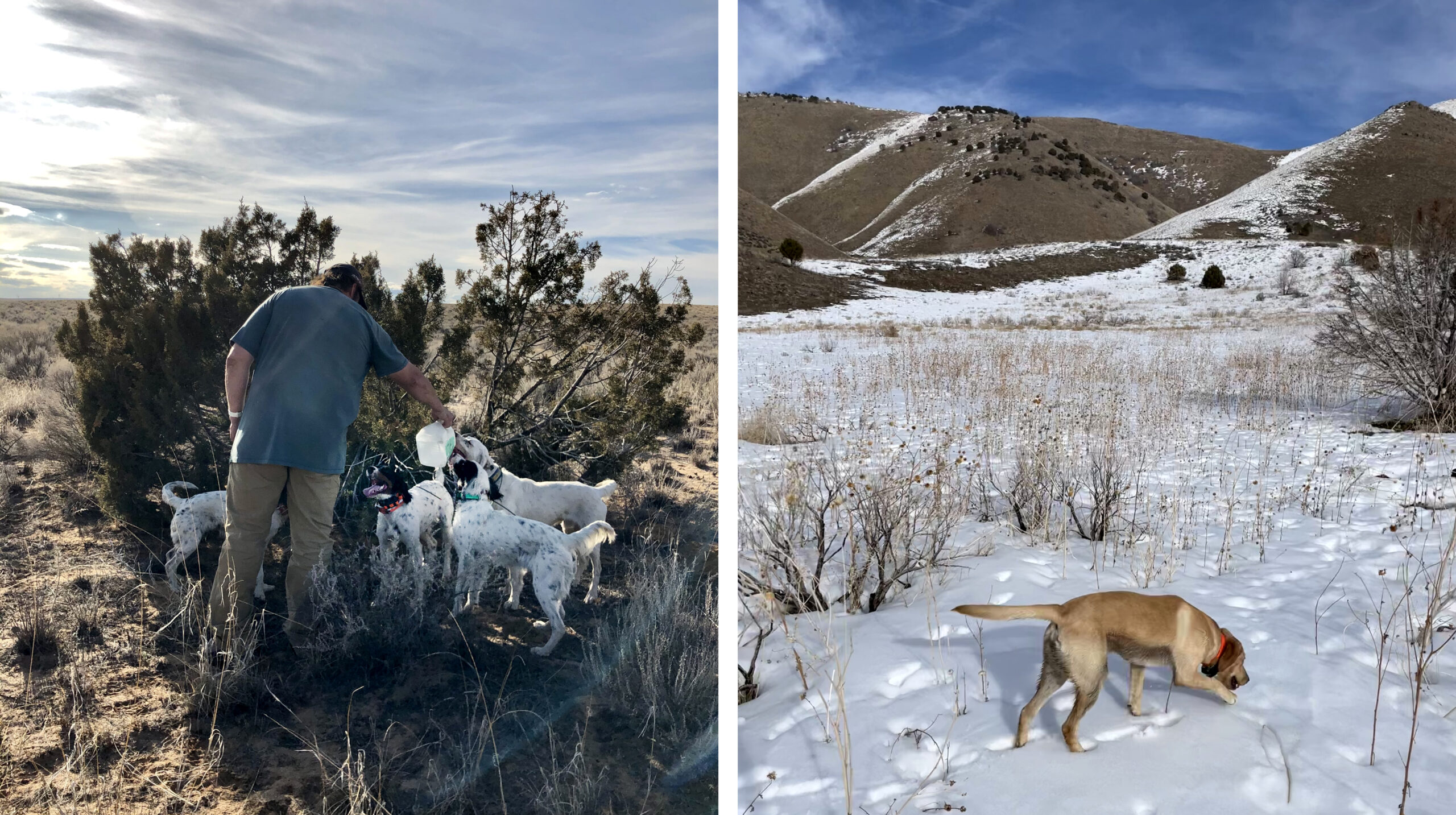
How to Free Your Dog from a Trap
While the odds of your dog or other pet encountering a trapper’s snare is remote, there are several steps you can take to minimize contact and to free the animal and minimize death or serious injury if you do encounter a snare.
The first is checking with the landowner, whether a private landowner or a public-lands agency, to determine if you might encounter snares or traps on the property. Most agencies require some sort of permit for trapping to take place, and should be able to confirm whether the land is being actively trapped.
In order to work efficiently, snares are deployed along trails and runs frequented by the target prey. Often these are in woody areas, along fencelines, or in a pinch point that funnels animal movement. These are the same areas your dog will often be inclined to travel out of convenience or while on scent. When possible, guide your hunting dog away from these areas.
Fundamentally, you should learn to recognize the type of snare being deployed. While the number of so-called “power snares” that use what is called a “dispatch spring” to apply extra pressure on the lock is increasing, you are most likely to encounter a simple cable snare. These have an L-shaped locking mechanism that prevents the cable from loosening around the neck of prey. You can learn all about snaring along with various distinctions between designs and models at The Snare Shop, based in Iowa. This business has some wonderful educational information, whether you snare or simply want to know more about how snares work.
Traditional snares tend to work best when their prey pulls against the resistance. Disabling these devices can be as easy as relaxing the tension, but you generally need to relax the lock as well. The power snares will continue to tighten even without constant tension, which means you have far less time to disable them.
That brings us to the simplest snare-deactivation tool: a pair of cable-snipping pliers. The best models, like the Swiss-made Felco FC7, have force-multiplying jaws, similar to those on a bolt-cutter, and hardened cutting edges. That’s an important consideration because modern snare cables use galvanized aircraft cable that can be hard or impossible to snip with regular multi-tool pliers. Carry these pliers with you, in a hip sheath, or in your upland bird vest. They probably won’t do you any good if they’re back at the trailhead in your pickup.
You should also prepare to deal with a freaked-out dog, one that is frightened, anxious, and probably fighting the neck constriction. One of the take-aways from interviews with hunters whose dogs encountered snares is that dogs that are broke to leash often survive better than those that resist, or pull away, from a leash. But assuming your dog is agitated, and possibly biting at you as you attempt to free it, plan to wrap a coat around its muzzle, to tackle and hold down the dog, and to put your limited time to work on cutting or disabling the snare rather than consoling your dog. This page serves as a useful guide to freeing your dog from a variety of traps you might encounter in the field. This page is a good state-by-state breakdown of coyote trapping and snaring regulations in the West. Make sure you know the rules in the state you’re hunting before you send your dog into the field.
Correction: The original version of this story incorrectly stated that Montana trappers are not required to report incidental capture of non-game species.

